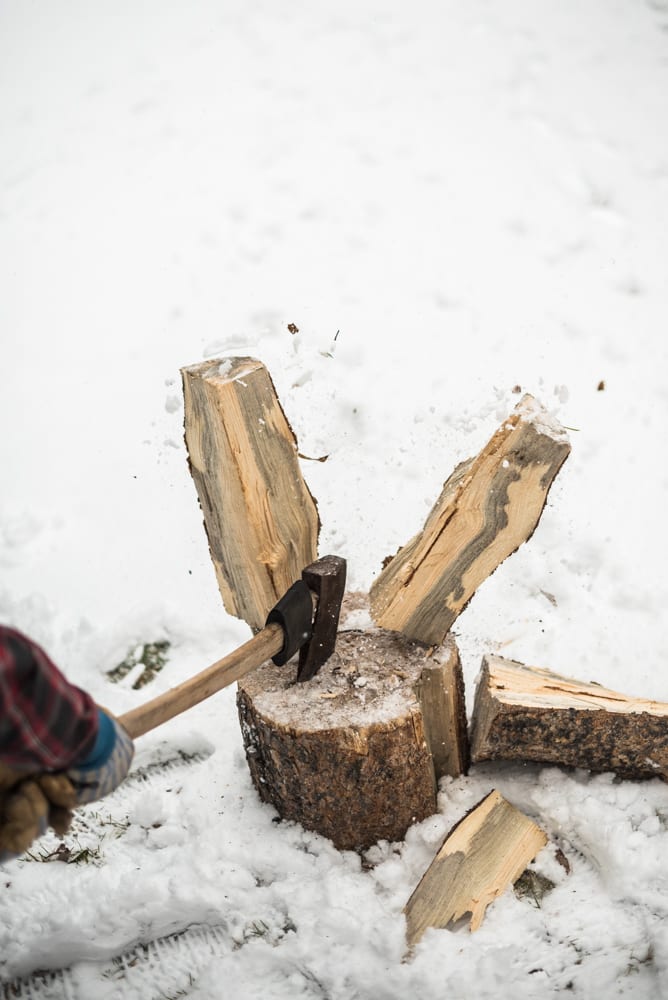The sensation is profoundly satisfying; lifting the full weight of an axe above your head, and driving it downward with each muscle, striking true. The round of wood crackles as it gives way, tumbling to the newly-frosted ground. For many in Jackson Hole, this is repeated hundreds of times in a ritual of seasonal transition. As summer wanes, and cooler temperatures foretell the snowy season ahead, it is time to gather and store firewood as a key source of heat for homes around the valley.

It begins on a chilly autumn morning, clad in layers of flannel and down, a sturdy pair of gloves stuffed in your pocket. Sliding into a pickup with friends, you bump down an unpaved road into the forest in search of a spot with plentiful deadfall. The chainsaw sputters to life, and the harvest begins as it has for centuries. There is a poetry in this labor, the most recent iteration in the ancient task of gathering fuel from the wild in preparation for harder months. After a few hours of lugging rounds of sticky and fragrant pine and heaving them into the bed of the pickup, you are grateful to climb back into the cab and let your tired shoulders rest on the way home.
When the pile of freshly-sliced rounds of pine is unceremoniously dumped onto your lawn, the work begins anew. It’s hard not to love the feel of a well-worn axe in your hands: the smoothness of the sturdy wooden handle, the full heft of the stout head and sharp edge. It is the weight of the thick metal head that gives each swing extra strength and focus to bite into the wood.
One of the thickest, sturdiest rounds serves as the platform atop which the others are placed for optimum chopping. It’s less than ideal to swing at a log that’s on the ground for a variety of reasons. Impact to the top can drive the bottom edges of the round into the dirt, decreasing efficiency of each swing. Also, aiming at something so low is a wonderful way to strain your back. Setting your target a foot or so off the ground ensures smoother, safer chopping.

The perfect swing, however, is a question of style. Some would suggest that the proper stroke begins with a grip near the base of the handle, and the other hand – typically your dominant hand – near the axe’s head. As the axe swings down, the upper hand slides down to meet the lower on the handle. Others prefer to keep both hands low on the axe throughout the lift and swing of the tool. While the cost of this method can be decreased accuracy, and will likely tire you out a little more quickly, it does merit a few extra style points.
No matter how you swing it splitting wood is a great way to enjoy being outdoors during the downtime of off-season. Pretty soon you’ll be curled in front of a crackling fire enjoying the fruits of your labor while the icy wind whips the snow into drifts outside. Sounds pretty nice…

Images © Taylor Glenn




